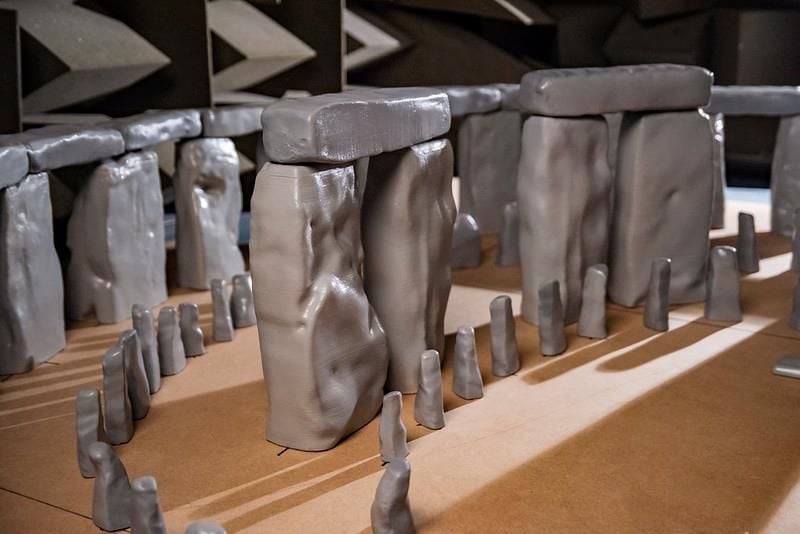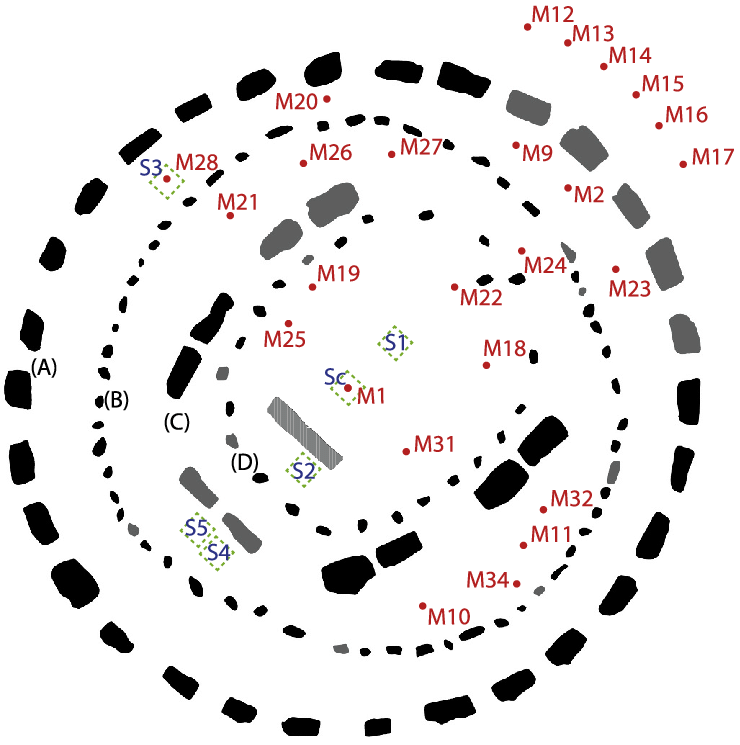Art World
A Remarkable New Study Suggests That Stonehenge Was Built to Amplify Sound During Ancient Ruling-Class Rituals
The stones also worked as a sound chamber, keeping outside noise out.

The stones also worked as a sound chamber, keeping outside noise out.

Sarah Cascone

We may never fully solve all the mysteries of Stonehenge, the monumental prehistoric circle of stones built on the Salisbury Plain in Wiltshire, England. But a new study suggests that it may have been designed to amplify sound in very specific ways.
To recreate the acoustic properties of the stone circle as it was originally built around 2,500 BC, acoustics engineers at the University of Salford in Manchester constructed a 1:12 scale model they called “Minihenge.” The results of their research have been published in the Journal of Archaeological Science.
“Constructing and testing the model was very time consuming, a labor of love, but it has given the most accurate insight into the prehistoric acoustics to date,” Trevor Cox, the project’s lead researcher, said in a statement. “With so many stones missing or displaced, the modern acoustic of Stonehenge is very different to that in prehistory.”
Thanks to laser scans of the site conducted by the governmental research group Historic England, Cox and his team were able to replicate the exact dimensions and precise topography of the monoliths using a computer-aided model and a 3-D printer. Missing stones were replaced where they were believed to have originally stood—157 in all, based on the latest archaeological research.

A scale model of Stonehenge in a sound chamber at the University of Salford, Manchester. Photo by Andrew Brooks, courtesy of the Acoustics Research Centre/University of Salford, Manchester.
The simulated stones were treated to replicate the acoustic properties of the site’s actual materials, allowing for more accurate results than in past models, such as a concrete replica in Maryhill, Washington.
Researchers then tested the model, placing speakers and microphones in and around it while working at the university’s Acoustics Research Centre, which boasts a specialist acoustic chamber. (To account for the difference in scale, all sounds were 12 times their normal frequency, in the ultrasonic range.)
The study found that people who spoke or played music inside the monument would have heard clear reverberations against the massive standing stones. Testing on the model also suggests that the stones increased the volume on interior sound, kept exterior sound out, and made it hard for anyone outside the structure to hear what was going on inside.

Plan for the Stonehenge scale model and the placement of speakers and microphones. Image courtesy of the Acoustics Research Centre/University of Salford, Manchester.
“You’d think that the sound would just disappear to the heavens, but there are enough stones horizontally that the sound keeps bouncing back and forth,” Cox told the New Scientist. “It’s quite magical that you could feel what it would have sounded like to have been in that space.”
The placement of the stones was capable of amplifying the human voice by more than four decibels, but produced no echoes. Music and other sounds would have been enhanced such that someone standing within the outer circle of stones would have heard conversations from the center with perfect clarity, even as the sound was obscured to those outside.
This suggests that activities such as religious rituals at Stonehenge were intimate events limited to a select group of participants, even though the site’s construction would have required a huge amount of manpower.

a scale model of Stonehenge in a sound chamber at the University of Salford, Manchester. Photo courtesy of the Acoustics Research Centre/University of Salford, Manchester.
To test the model, researchers tried several different configurations of the stones, in acknowledgment of experts’ belief that the circle of stone was reconfigured several times during prehistory. But despite the changes, researchers found that the difference in the acoustics would not have been detectable to the human ear.
While sound appears to have been an important consideration for the ancient builders, researchers still believe that astrological alignment was the primary factor in the placement of the stones. And mysteries about Stonehenge’s musical properties still abound.
“Stonehenge hums when the wind blows hard,” musicologist Rupert Till of the University of Huddersfield in England, who has previously conducted acoustic research on the site, told ScienceNews.

a scale model of Stonehenge in a sound chamber at the University of Salford, Manchester. Photo courtesy of the Acoustics Research Centre/University of Salford, Manchester.
There is also speculation that some of the smaller stones used in the ancient site’s construction may have been chosen for their musical qualities. Making a sound much like a metallic gong when struck, they could have been used as percussion instruments, Cox suggested in the Guardian in 2014.
That theory was tested in a 2013 study conducted by researchers from the Royal College of Art in London, who were able to “play” Stonehenge’s ringing stones like a giant xylophone in a unique form of “rock” music.
According to their findings, published in Time & Mind: The Journal of Archaeology, Consciousness, and Culture, the stones’ musical properties were likely even more pronounced in antiquity, before they were set in reinforced concrete, limiting the natural reverberations.